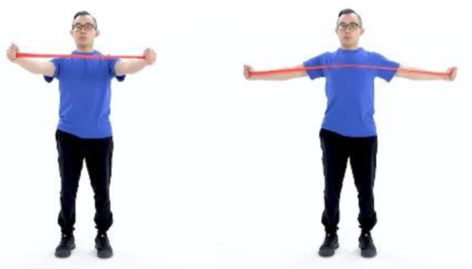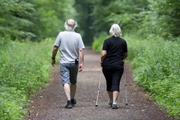Paddle Without Pain This Summer
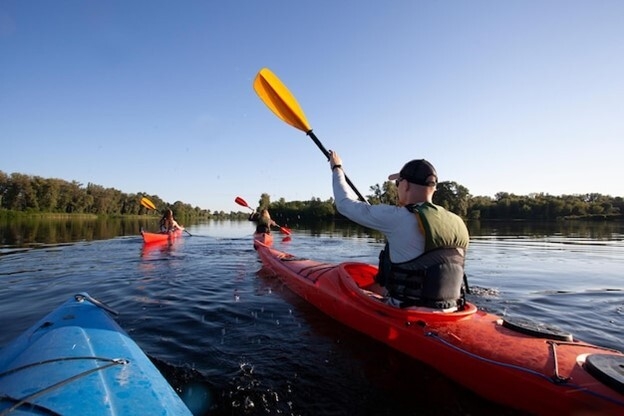
Summer often has many lovers of the outdoors running for the water. Be it a lake, river, or pool, the water is a great retreat from the heat, and there are loads of great activities that get us out of the house and into the water. With some of these activities, like swimming, surfing, kayaking, paddleboarding, and canoeing, many people may experience some form of shoulder pain or discomfort. This blog will discuss why this happens and will provide a few simple exercises that can help prevent or eliminate these symptoms.
Any activity that involves paddling, with a paddle or with our arms, has the potential of putting the shoulder in positions that we don’t usually go into and putting stresses into our joints, muscles, and tendons that we don’t experience in our everyday lives. While this isn’t dangerous or risky for any inherent reason, it can cause overuse injuries if those muscles and tendons experience too much stress too quickly.
Luckily, these kinds of injuries are preventable and treatable. In absence of pre-existing shoulder pain or injury, taking your shoulder through a full range of motion and gently & progressively loading the tissues of the shoulder in those motions can help those muscles, tendons, and joints get used to the stress of paddling.
The exact motions you need to work on will vary depending on our activity of choice (paddling a surfboard uses different muscles and positions than paddling a canoe), but, in general, strengthening the rotator cuff muscles, the muscles around the shoulder blade, and the muscles of our mid & upper back is a good place to start. The muscles in our core also play a big role in paddling and when we don’t use these muscles along with our shoulder muscles, our shoulders can end up working harder and experiencing more stress than they need to. Because of this, it is also a good idea to train the muscles of our mid-section as well, and in particular, the muscles that help with rotation of the midsection.
These are a few quick drills and exercises that help get you paddling comfortably and keep you on or in the water!
Theraband Pulldown
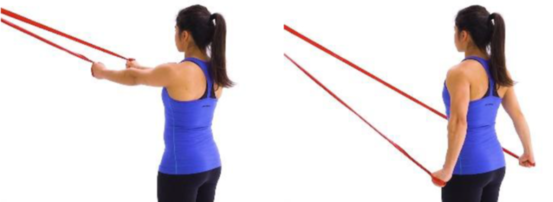
Strengthens: Latissimus - the big back muscle
Cues: straight arm, shoulder blades in your back pockets, elbows finish behind the torso.
Tip: Lean forward or move band anchor higher to change the resistance and range of motion
Theraband Row
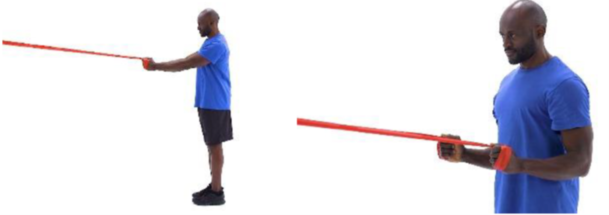
Strengthens: Latissimus, Trapezius (mid/upper back muscle between the shoulder blades), Biceps
Cues: Pull with your elbows, try to touch your elbows behind your back, shoulder blades in back pockets
Tip: play with the angle (high to low, low to high, middle) of the band and the position of your hands (overhand, underhand, neutral/thumbs up)
Theraband Pull Apart with External Rotation
Strengthens: Trapezius, posterior deltoid (back of the shoulder cap muscle), rotator cuff
Cues: point thumbs toward each other to start, finish with thumbs pointed away from each other
Tip: change the angle of the band (hone hand high, one hand low)
Kneeling Theraband Trunk Rotations
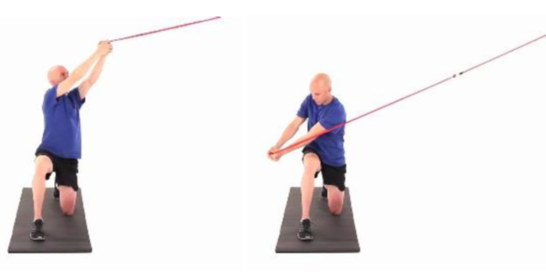 Strengthens: obliques, abdominals
Strengthens: obliques, abdominals
Cues: straight arms, hips forward, keep stomach tight
Tip: change band height and direction of pull (low to high, high to low)

